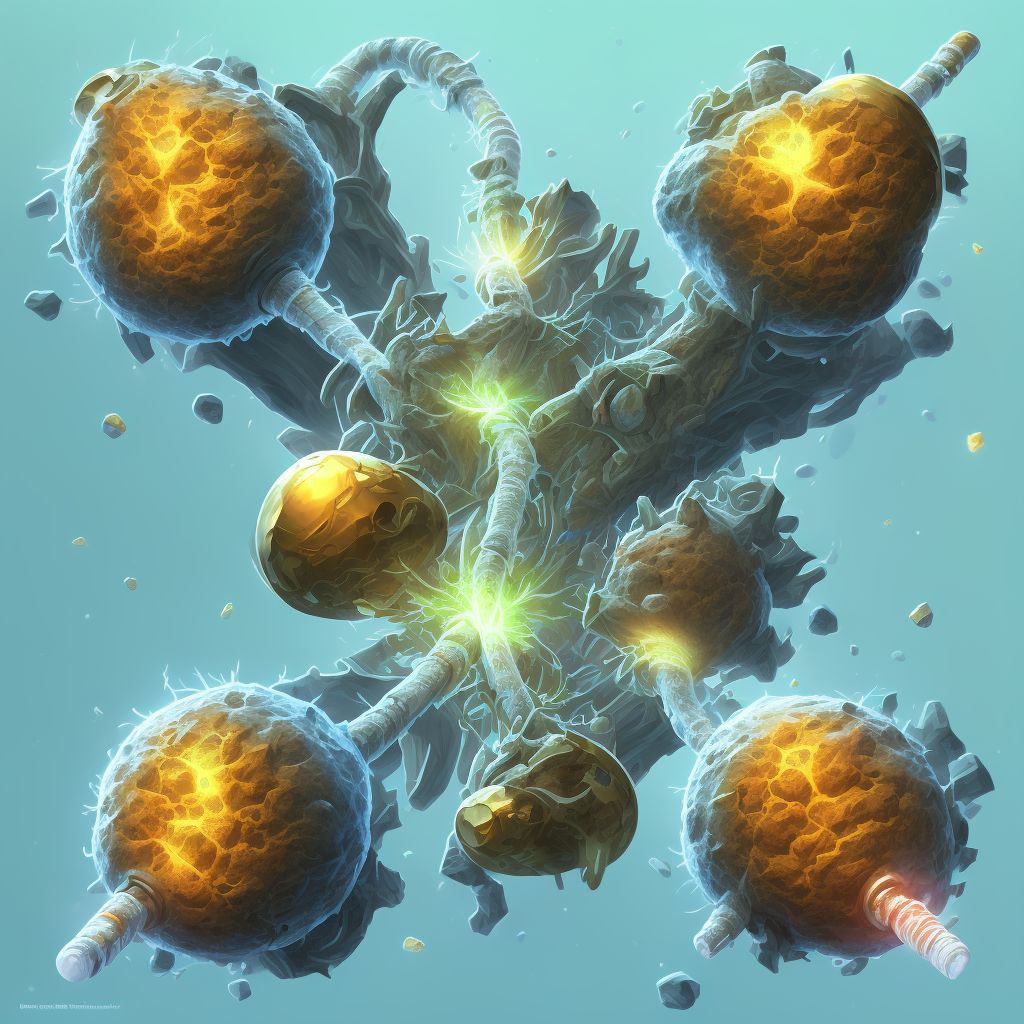
Nondisplaced segmental fracture of shaft of left tibia, sequela Save
ICD-10 code: S82.265S
Disease category: S82.265: Nondisplaced segmental fracture of shaft of left tibia
Nondisplaced Segmental Fracture of Shaft of Left Tibia, Sequela: Understanding the Condition
A nondisplaced segmental fracture of the shaft of the left tibia, sequela, refers to a specific type of injury that affects the lower leg bone, resulting in long-term consequences. This condition occurs when the tibia bone sustains a fracture that is segmented but remains in its original position without any displacement. While treatment options are available, this article will focus on providing a comprehensive understanding of this fracture without discussing treatment methods.
1. Causes:
A nondisplaced segmental fracture of the shaft of the left tibia can occur due to various reasons, such as trauma from accidents, falls, or sports-related injuries. The impact on the tibia can lead to a fracture that is divided into multiple segments, but the bone remains aligned.
2. Symptoms:
The most common symptoms associated with this condition include pain, swelling, and difficulty bearing weight on the affected leg. Additionally, visible deformity or bruising may be present at the site of the fracture. It is essential to consult a healthcare professional for a proper diagnosis and evaluation of the symptoms.
3. Diagnosis:
To diagnose a nondisplaced segmental fracture of the left tibia, a healthcare professional will conduct a thorough physical examination and may order imaging tests such as X-rays or CT scans. These tests help determine the extent of the fracture, the number of segments involved, and whether any displacement has occurred.
4. Complications:
While the fracture may be nondisplaced, sequela refers to the long-term consequences or complications that can arise from the injury. These complications may include chronic pain, limited mobility, and an increased risk of future fractures in the affected area. Seeking appropriate medical care and following a comprehensive rehabilitation plan can help mitigate these complications.
5. Management:
The management of a nondisplaced segmental fracture of the shaft of the left tibia, sequela, typically involves a multidisciplinary approach. Healthcare professionals may recommend physical therapy, pain management techniques, and assistive devices to aid in the healing process and improve functional outcomes.
- Causes
- Symptoms
- Diagnosis
- Complications
- Management
In conclusion, a nondisplaced segmental fracture of the shaft of the left tibia, sequela, is a specific type of injury that occurs in the lower leg bone. While treatment options are available, understanding the causes, symptoms, diagnosis, complications, and management of this condition is crucial for patients and healthcare professionals alike.
Treatment of Nondisplaced segmental fracture of shaft of left tibia, sequela:
Treatment Options for Nondisplaced Segmental Fracture of Shaft of Left Tibia, Sequela
When it comes to a nondisplaced segmental fracture of the shaft of the left tibia, proper treatment is crucial for optimal healing and recovery. This type of fracture occurs when the tibia bone breaks into multiple pieces without significant displacement. Here, we explore some treatment options fo...
To see full information about treatment please Sign up or Log in